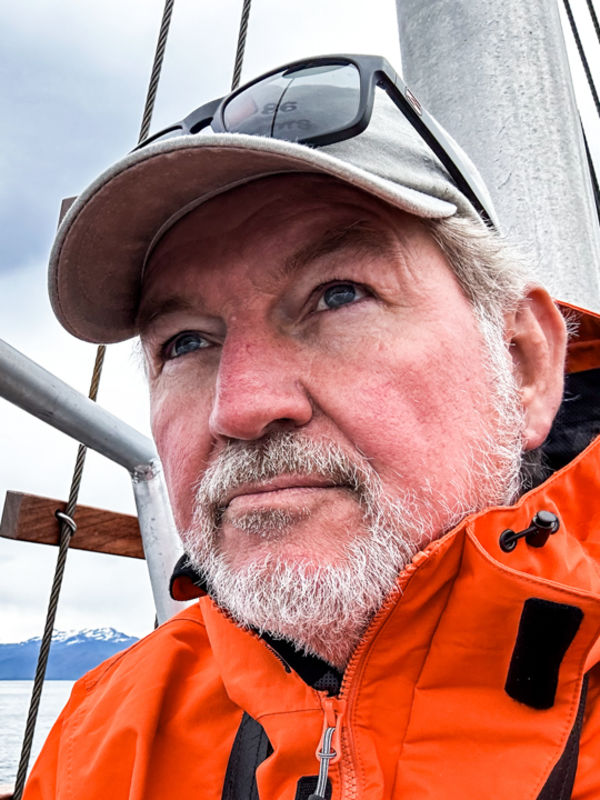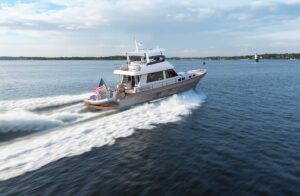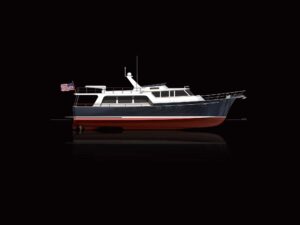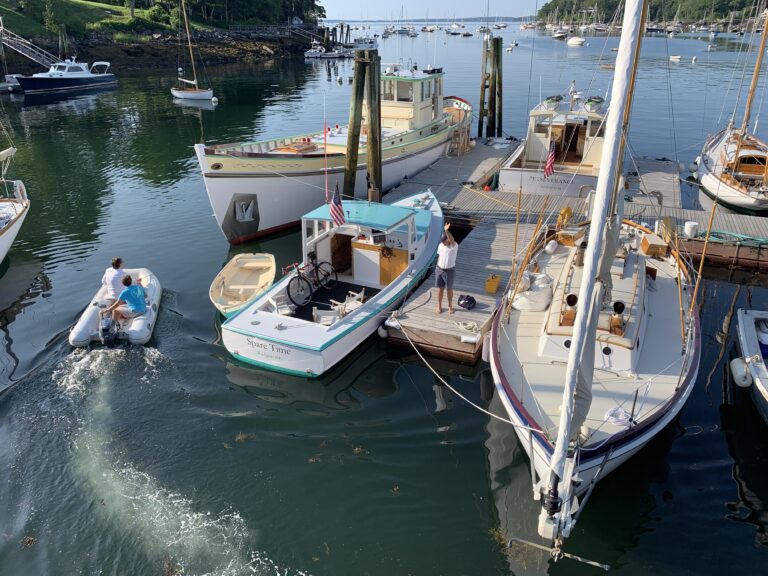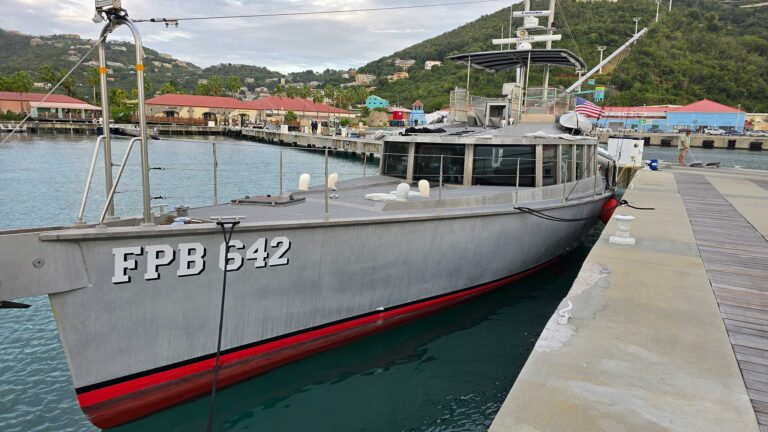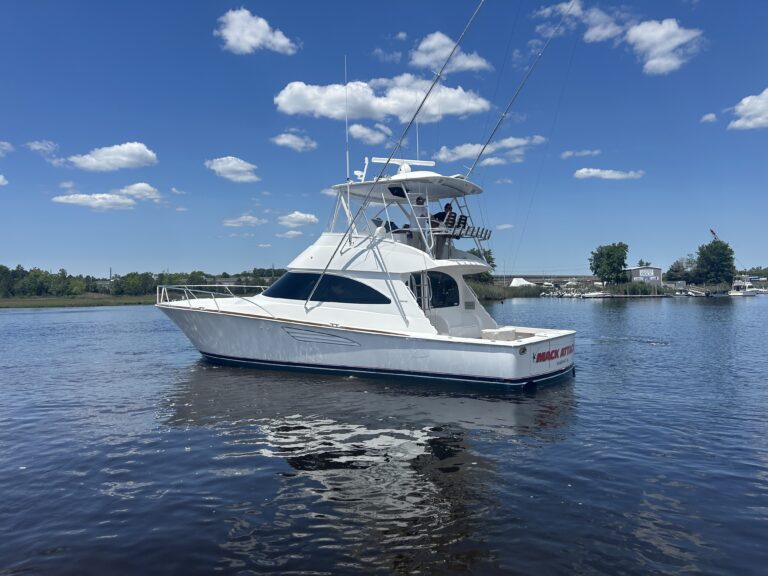At first glance the Serenity 64 looks like a lot of other power cats. There is a ton of space. The aft cockpit is enormous. You can take in the sun on the bow, stern and aft on the flybridge. It has a 320-square-foot salon, a large galley and four custom staterooms, plus a crew cabin. It also has shower walls covered in slate so thin it curves around the corners, but it’s the silent solar-electric propulsion system that makes this ocean-going powerboat a rare catamaran.
Boyd Taylor and his wife, Elizabeth Neville, built the first Serenity 64 in 2018. Constructed in Turkey’s free-trade zone, the first hull made its world debut at Cannes, France. But earlier this year they brought the second hull to the Miami Boat Show for its American debut.

The couple live in Orlando, Florida. Elizabeth is an environmental lawyer and Taylor describes himself as a “jack-of-all trades.” He’s been a reporter for Alabama Public Radio, worked as a translator and investigator, and had a stint at the Golf Channel. They started a solar-electric boat company because they wanted to create an eco-friendly boat for people who are tired of diesel yet want to travel long distances. They are not the first to do so. Austrian builder Silent-Yachts was one of the first to offer ocean-going solar-electric catamarans; that builder sold two of its flagship 80-footers in the midst of the coronavirus pandemic.
Taylor and Neville believe there is plenty of room in the market for the Serenity 64. Their company also offers a 74-foot model that will cruise at 7 to 9 knots. “We welcome the competition,” Taylor says.
Taylor reports that the Serenity 64 cruised on solar power and batteries alone during a three-month voyage the couple made on hull number one across the Mediterranean Sea. They took her from the yard in Turkey to Spain with stops in Greece and Italy.

The 64 is powered by more than 700-square-feet of solar panels mounted on the salon roof and hardtop flybridge. The 42 SunPower panels generate more than 15 kWh at peak production. According to Taylor, that’s enough energy for the 64 to cruise all day and still store enough battery power to coast through the night—all while using the onboard electrical amenities, including the air conditioning. The solar energy is stored in a 142 kWh bank made up of four 35.5 kWh batteries. Then there are separate house batteries, emergency batteries, engine start batteries and bowthruster batteries. Most of the systems, including the electric motors, run on 96 volts. Inverters and step-down chargers provide 24-volt power to the remaining systems.
Two 18 kW TEMA hand-wound marine electric motors with internal air-cooling propel the 64, giving her a cruising speed of 5 to 6 knots. Instead of using canoe hulls, the boat gets its efficiency from wave-piercing hulls and all-carbon fiber construction, which according to Taylor resulted in 16,000 pounds of weight savings. When the upper helm area is not in use, the hardtop can be hydraulically lowered to improve aerodynamics and prevent shading of the coach roof panels, which improves solar gain.

They plan to build all-electric versions of the Serenity 64, but the first two versions have alternate power. Two 200-hp Volvo Penta D3 diesels are coupled to the driveshafts, giving the boat a top speed of 16 knots. “For ocean-going, you gotta have diesel back-up,” Taylor says. There’s also a diesel-powered generator, which can feed the batteries when the sun doesn’t shine for extended periods.
Taylor says despite the long trip across the Med, the diesels have seen very little use. “There are only 15 hours on the generator and 8 of those are from the boat’s time in the yard,” he says. “Since it left Turkey, it’s never been plugged into shore power.”
And with the large solar array, the cruising range is virtually unlimited. “It’s ludicrous,” Taylor says. “Who doesn’t want free power?”
Specifications:
LOA: 64’0”
Beam: 31’0”
Draft: 3’7”
Displ. (light): 48,000 lbs.
Power: (2) 18-kW TEMA electric drives; (2) Volvo Penta 200-hp D3 diesels
Fuel: 405 gals.
Water: 435 gals.
Price (loaded): $3.3 million


